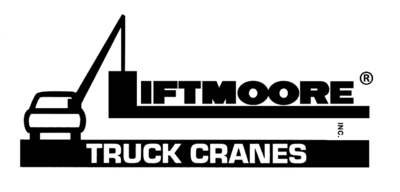Hydraulic System for Hydraulic Cranes
The hydraulic system consists of the hydraulic swivel, manifold with solenoid valves, cylinders, motors, tubing and hoses. Hydraulic power is received from an external hydraulic source, typically a PTO driven pump attached to the vehicle transmission. The hydraulic system uses open center valves in series so that multiple functions can be operated simultaneously.
 Swivel (not used in 1032 or 1640)
Swivel (not used in 1032 or 1640)
The hydraulic swivel is a two-port swivel that allows continuous, unlimited rotation. Refer to drawing for more information.
Manifold
The hydraulic manifold consists of a differential pressure sensing flow control valve, the system relief valve, proportional flow control valve, and 4 way directional control valves. The differential pressure sensing (DPS) valve is a pilot operated pressure compensated flow control cartridge valve located in cavity CT1. It supplies the required flow to the manifold and returns excess flow to the tank so that pressure drop and heat build up are minimized.
The system relief valve prevents damage that would be caused by excessive pressure in the system. It is a cartridge type valve located in cavity CT2. Factory setting is 2800 psi.
The proportional valve is an electrically operated flow control valve. It allows the operator to control the flow, and therefore the speed, of the selected functions. The flow output is directly proportional to the electrical input. The valve may be operated manually by depressing the manual operation button on the top of the valve.
Each hydraulically operated function is controlled by a 4 way, 3 position open center solenoid valve. It is electrically operated and spring biased to center. A manual operation button is incorporated in the coil retaining nut.
Cylinders
Hydraulic cylinders are double acting cylinders with integrally mounted counterbalance valve and pilot operated check valves. Refer to the cylinder drawings for specific information.
All cylinders use a counter-balance load holding cartridge valve on the extend port. This valve performs 3 functions:
- Controls the rate of decent when lowering the load
- Keeps load from falling in the event of sudden loss of system pressure, such as when a hose bursts.
- Acts as a relief valve to prevent damage from induced load or thermal expansion
It allows free flow to extend then blocks flow until opened by pilot pressure to the retract port or when the relief pressure is reached.
Some cylinders utilize a pilot operated check valve on the retract port to prevent the cylinder from creeping out under no load conditions. This valve allows flow into, but prevents flow from the retract port, thus hydraulically locking the cylinder until opened by pilot pressure to the extend port.
Motors
The hydraulic motors used by the rotation drive and hydraulic winch are high torque, low speed constant displacement motor.
Manual Operation
If electrical problems occur the solenoid valves may be operated manually. Refer to the manifold drawing for function valves and directions.
Directional control valves are manually operated by depressing the boot at the end of the valve. Use a blunt object (e.g. bolt or screwdriver handle) to assist in the operation.
Proportional valves are operated with either a boot over the valves stem or a small screw that can be screwed in to open the valve. Depress the boot or turn the screw slowly while operating a function to determine optimum speed. Turning the screw all the way in will result in rapid crane movement.
If hydraulic power is lost while a load is suspended, the load may be lowered by decreasing the setting on the counterbalance valve. This should only be done in extreme cases. The valve must be reset before the crane is returned to use.
To decrease the setting, loosen the locknut on the valve, then slowly turn the adjustment stem CLOCKWISE until the load begins to lower. Count the number of turns so that the valve can be returned to its original setting.
Alternately, a pressure u must be put on the retract port to adjust the setting so that approx. 1800 PSI is required to lower the boom with no load.
Test the setting by lifting a known load near the moment rating of the crane.

